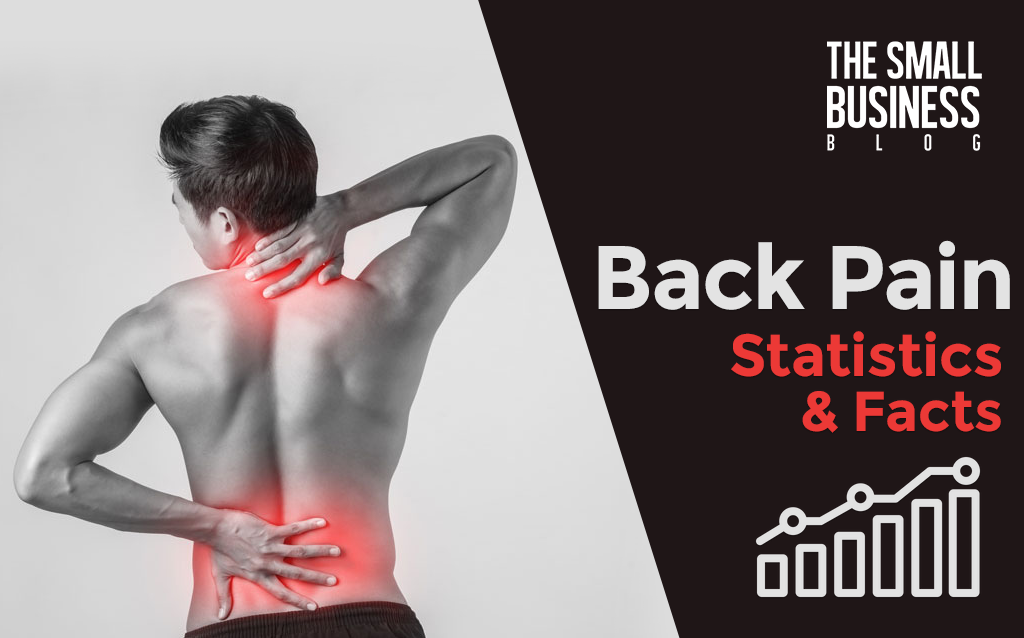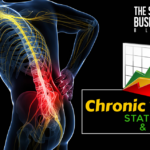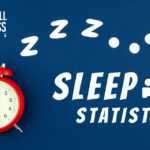The number of people who experience back pain has surged over modern times. It is one of the world’s most frequent health problems that requires urgent attention.
There is no specific age bracket for experiencing back pain as there have been numerous studies of occurrence from both the young and elderly.
Health institutions spend millions of dollars studying the detrimental effects of back pain every year.
There is ongoing, widespread research on back pain using different models and mechanisms to find a lasting solution to this ailment.
Let’s explore the latest back pain statistics for 2024
Post Contents
- 1 Key Back Pain Statistics 2024
- 2 Detailed Back Pain Statistics 2024
- 2.1 1. The Increasing Number of Disabilities Worldwide Can Be Associated to Back Pain. Statistics Show that Individuals Who Experience Back Pain Are Often Unable to Go About Their Daily Activities.
- 2.2 2. More than 500 Million People Suffer from Back Pain at One Time or Another.
- 2.3 3. Medical Experts Predicted that At Least 70% of Citizens in The US Would Experience Back Pain. the Pain Might Be Constant or Periodic, but It Would Occur in A Lifetime.
- 2.4 4. Chronic LBP Is Likely to Occur During Old Age.
- 2.5 5. Between 1990-2015, the Total Number of Individuals Living with Disabilities Has Increased More than 50%
- 2.6 6. A Survey Shows that More than 20% of Suicidal Cases Are Related to Back Pain.
- 2.7 7. Back Pain Is the Third Most Popular Reason Why People Book Sessions with Medical Practitioners.
- 3 Low Back Pain Statistics 2024
- 3.1 8. About 10% of The Global Population Experiencing Low Back Pain Is Currently Experiencing Low Back Pain.
- 3.2 9. Sometimes LBP Begins in Childhood as There Are Numerous Reports of Children and Adolescents Experiencing Symptoms.
- 3.3 10. Women Irrespective of Their Age Group Are Likely to Experience LBP Compared to Men.
- 3.4 11. 80% of Women Say It Impacts Their Simple Routine, and 10% State They Can’t Work.
- 3.5 12. The Challenge of Back Pain Is Massive in The International Health Systems
- 3.6 13. The Leading Five Grounds for Calling an Emergency Division Is LBP
- 3.7 14. The News of Undergoing LBP in 3 Previous Months Is Over a Quarter
- 4 The Cost of Back Pain in 2024
- 5 Office Back Pain Statistics
- 6 The Impact of Back Pain on Sleep
- 7 Statistics about Back Pain Treatment
- 7.1 1. About 37% of Americans Suffer from Low Back Pain and Do Not Consult Medical Care to Relieve Symptoms.
- 7.2 2. While Many Factors Result in Back Pain, only 10% of People Know the Primary Cause of Pain.
- 7.3 3. 29% of Americans Claim that Stress Is the Leading Cause of Their Back Pain.
- 7.4 4. Between 1994 and 2005, the Total Number of Medicare Beneficiaries Who Performed Mri Scans of The Lumbar Region Was Over 300%.
- 7.5 5. 32% of Medical Care for Low Back Pain in The US Does Not Follow Clinical Procedures.
- 8 Different Types of Back Pain Treatment
- 9 Conclusion
- 10 Sources
Key Back Pain Statistics 2024
Here is a quick summary of statistics across varying demographics and populations worldwide;
- More than 75% of Americans experience back pain in their lifetimes.
- About 12% of the world population is currently suffering from lower back pain.
- Research proves that back pain is the number one cause of disability around the globe.
- More than $50 billion is spent annually by Americans to treat back pain ailments.
- Women suffer from back pain more than men.
- The possibility of experiencing back pain at old age is high.
- In America, the amount of productivity lost to back pain is more than 3 million years annually.
- More than 25% of US citizens believe the primary cause of back pain is stress.
Detailed Back Pain Statistics 2024
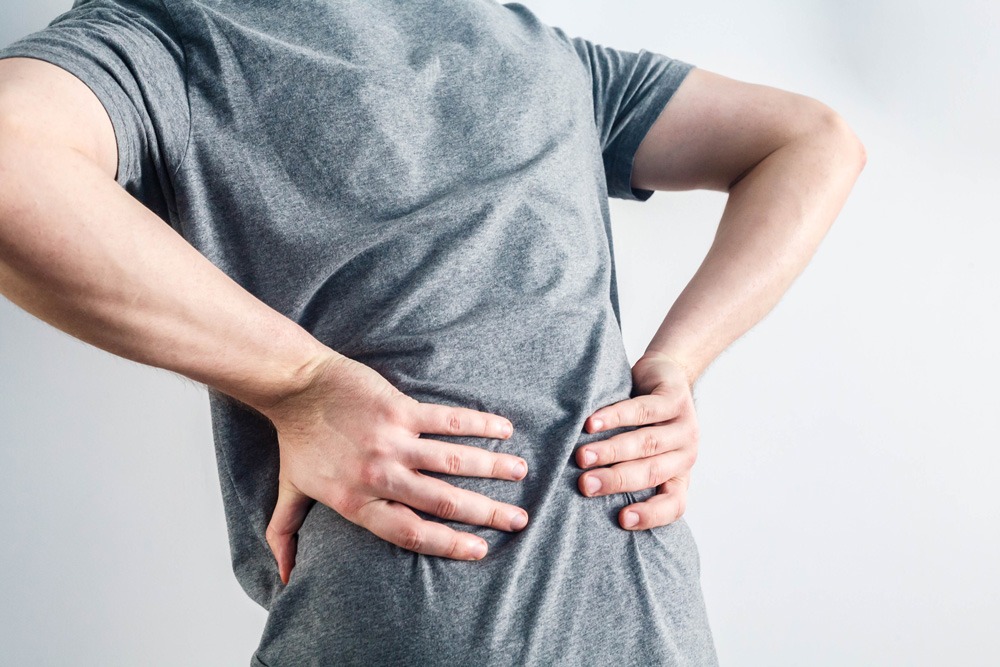
To illustrate the alarming rate of back pain problem, below are more information about this ailment;
1. The Increasing Number of Disabilities Worldwide Can Be Associated to Back Pain. Statistics Show that Individuals Who Experience Back Pain Are Often Unable to Go About Their Daily Activities.
An in-depth analysis conducted in 2017 shows that back pain is among the top six causes of disability—the survey conducted by the Global Burden of Disease survey involves more than 190 countries worldwide.
Data accumulated from this conclusion is about 69,000.
The result proves that Low back pain(LBP), Headache disorders, depressive disorders, diabetes, old age hearing loss, and COPD(Chronic Obstructive Pulmonary Disease) are the top causes of disability.
2. More than 500 Million People Suffer from Back Pain at One Time or Another.
3. Medical Experts Predicted that At Least 70% of Citizens in The US Would Experience Back Pain. the Pain Might Be Constant or Periodic, but It Would Occur in A Lifetime.
Research conducted by the National Institute of Neurological Disorders and Stroke and the American Chiropractic Association at different intervals confirms that 80% of Americans will experience lower back pain in a lifetime.
Furthermore, among the remaining citizens, 80 million individuals confirm to have back pain symptoms yearly, as 90% of those affected recover in less than six months.
Those that did not recover within the stipulated duration develop chronic LBP that lasts for three months or more.
However, individuals between the ages of 15-65 years old are likely to experience reoccurrence yearly if not treated. Therefore, the back pain occurrence statistics might surge if you have a back injury.
Research by the US Bureau of Labor Statistics(BLS) shows that more than 600,000 Americans who experience back pain spends more than $40 billion yearly.
The research suggested that the reasons are non-organic or mechanical as conditions like cancer, infection, or inflammatory arthritis cause the ailment.
4. Chronic LBP Is Likely to Occur During Old Age.
Twenty-eight studies conducted across different locations show that individuals between 30-60 years are more likely to experience prevalent back pain.
The summary of the research shared shows the age group 24-39 years are likely to have 4.2% occurrence while 20-59 years is 19.6%.
5. Between 1990-2015, the Total Number of Individuals Living with Disabilities Has Increased More than 50%
Likewise, the statistics of suicide have surged.
6. A Survey Shows that More than 20% of Suicidal Cases Are Related to Back Pain.
The most popular suicide case is caused by Spine pain (24%) and musculoskeletal pain (20.8%). Other conditions are back pain (22.6%), diabetic neuropathy (4.9%), cancer (12%), headache (4.6%), migraine (5.2%), and fibromyalgia (5.1%).
7. Back Pain Is the Third Most Popular Reason Why People Book Sessions with Medical Practitioners.
Research containing about 145,000 individuals shows the reason why people visit doctor’s offices is LBP.
Mayo Clinic conducted the survey, and the percentages are; respiratory disease (22.1%, excluding asthma), skin disorders (42.7%), back pain (23.9%), joint disorder, and osteoarthritis (33.6%), and lipid metabolism disorder (22.4%).
Low Back Pain Statistics 2024
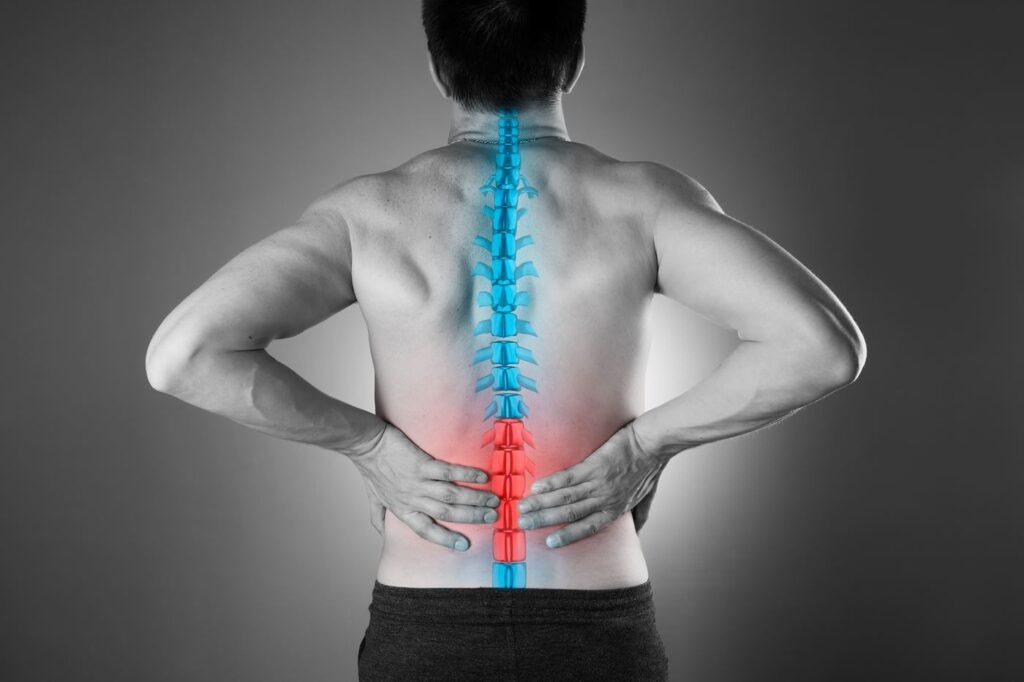
The region of low back pain starts from the rib cage, also known as the lumbar region. Different experts did a lot of research about this ailment’s cause and treatment.
A medical practitioner in the US expresses that individuals undergoing more physical activities are at high risk of experiencing back pain. This theory is the same for mental or obese conditions.
These surging low back pain statistics is a significant concern to health organizations, below are some data you should know about this illness;
8. About 10% of The Global Population Experiencing Low Back Pain Is Currently Experiencing Low Back Pain.
The information above was confirmed after research by the Annals of Rheumatic Diseases. The analysis was across 80 countries with more than a hundred studies. Furthermore, LBP continues to surge in the US.
9. Sometimes LBP Begins in Childhood as There Are Numerous Reports of Children and Adolescents Experiencing Symptoms.
Young ones that experience this ailment may not take part in some school activities. If you notice symptoms of this illness in your child, you should seek medical attention.
However, adults between 30-50 years are likely to experience LBP as advanced age individuals are prone to this ailment.
10. Women Irrespective of Their Age Group Are Likely to Experience LBP Compared to Men.
Household interviews conducted by Centres for Disease Control and Prevention (CDC) affirm that a large population of adult women suffers LBP compared to men.
The survey shows a third population of women, irrespective of age, have this illness. In the CDC data report, the back pain cases have increased in the last few months despite breakdown into different age groups.
11. 80% of Women Say It Impacts Their Simple Routine, and 10% State They Can’t Work.
The research highlighted by the University of Michigan states that about one-half of pregnant women have a significant ailment of backache. It is the usual reason for a sick break after birth with LBP enlarging after menopause.
Moreover, the American Physical Therapy Association explains that limited women (20%) will lodge complaints on low back pain, affecting the effectiveness of their work. This is not so with men (31%).
12. The Challenge of Back Pain Is Massive in The International Health Systems
The impairment and worth ascribe to LBP are fourteen to step up hereafter, particularly in middle-income and low-income countries, where the health schemes are not furnished to deal with this developing load on the society.
13. The Leading Five Grounds for Calling an Emergency Division Is LBP
Yearly in the U.S., 2.6 million immersion visits, with a rising rate of opioid prescriptions given.
14. The News of Undergoing LBP in 3 Previous Months Is Over a Quarter
The Cost of Back Pain in 2024
Back pain results in a significant economic effect on both healthcare systems, patients, and society.
- $50 billion is spent yearly to attend to back pain in America. The American Chiropractic Association opines that when you decrease productivity and add lost paychecks ( usually called indirect worths), easily increase the chart above $100 billion.
- Productiveness losses fused to absenteeism worth employers $225.8 billion yearly.
Indeed, chronic back pain bearers make a bulk lump of this computation. The Centers for Disease Control and Prevention(CDC) compare this to $1,685 per worker annually.
- A stumbling 3 million annual productive life is doomed in the U.S. annually due to back pain.
- Worth’s change considerably for people living with LBP because it boils down to their management and stringency.
One of the Health Service Research studies published that the first treatment worth a for patients is 50% lesser when a physical treatment referral pursued the main care reference instead of a forward-looking imagery referral.
In addition:
When physical therapy is first used as a management technique, it amounts to 72% fewer worth in the preceding year.
Those who get physical treatment for kickoff were not likely to go through injections and surgery and with a minimal visit to the emergency division and specialist within a year after the introductory consultation.
Office Back Pain Statistics
Work can amount to real pain because our bodies are not made for passive ways of existence. For example, having to sit for long periods can result in back discomfort.
- Back pain is mostly the spur for skipping work. Half of the Americans in employment accept they have these indications yearly. The U.S. Bureau of Labor Statistics affirms workers take a minimum of 12 days of sick recuperation off before getting back to the office.
- Americans of about 54% who complain of pain use most of their day sitting in the office.
Is it preventable? Mostly, the reply is, Yes!.
- About one-third of back trauma is preventable with a well-designed workspace.
Standing desks have become popular. Harvard Medical School reveals the main gain of a standing desk helps to lessen neck and back pain.
Yet, we have some reviews:
The University of Waterloo made an investigation on the effectuality of standing desks. The experiment shows that 40% of those without back trauma get lower back pain when they repeatedly stand for two hours.
Some jobs boost back pain trauma and result in extreme pain. If your job involves lifting materials, whole-body vibrations, sudden movements, twisting simultaneously, lifting or bending for a more extended period, you will likely sustain back injuries.
Before the 2020 global pandemic, just 1in 6 Americans work from home. Recently, with the surge in the distance working, the risk of having back pain has heightened.
- The U.S. Bureau of Labor Statistics uncovered that a million workers endure this kind of trauma annually.
- The Musculoskeletal syndromes that affect the back amounted to 38.5% in 2016, which led to a break from work. The U.S. Bureau of Labor Statistics finds the most touching line of work that encountered Musculoskeletal syndrome which had to be off from work are;
- Nursing assistance (52.8%)
- Order and Stock Fillers (45.7%)
- Freight and Laborer, Material Movers and Stock (43%).
- Repair and Maintenance Workers (42.5%).
- Cleaners and Janitors (37.5%).
- Tractor-trailer and Heavy truck drivers (32.4%).
6.) For some industries, back trauma causes more job restrictions to duties or transfer as against missed days from work.
For instance, in Merchandise Stores, 31.8 cases in every 10,000 job restrictions or transfers were documented. Endeavor to view our back injury statistics; it’s worth reading, and you are not alone if you have the same experience.
The Impact of Back Pain on Sleep

We now know about 35% of Americans lack the advocated seven hours every night, and 20% undergo a sleep disorder.
- Back pain has interfered with the daily tasks of about one-third of grown-ups. We have a statistic of 39% for everyday tasks, 38% for exercises, and 37% for sleep.
The National Sleep Foundation distributes the 2015 sleep in America TM Poll that emphasizes a norm of 42 minutes of sleep deficit when people bear chronic pain, against 14 minutes for people encountering acute pain.
With:
65% without pain stating a ‘very good’ or ‘good’ quality sleep, and 45% with acute pain and 37% with chronic saying the same.
And:
23% of people with chronic pain made known the impression of more pressure against 7% with no pain. When stressed, it threatens our good night’s sleep.
Check out a compilation of top things to assist your sleep for people who desire to improve their sleep.
Statistics about Back Pain Treatment
Back pain is the leading cause of disability globally, which can affect the everyday activities of individuals. Since it affects daily living, it’s crucial to get adequate and proper care.
Below are facts about back pain treatment.
1. About 37% of Americans Suffer from Low Back Pain and Do Not Consult Medical Care to Relieve Symptoms.
2. While Many Factors Result in Back Pain, only 10% of People Know the Primary Cause of Pain.
3. 29% of Americans Claim that Stress Is the Leading Cause of Their Back Pain.
An online survey carried out by Statistica involving over 700 people between the ages of 18 years, and above reports that 29% of individuals experienced stress, 26% complained of weak muscles and physical work.
21% became overweight, while 21% of the young adults reported spinal disc herniation. 20% of them were mostly inactive, sitting at their desks, and 7% were involved in an accident.
4. Between 1994 and 2005, the Total Number of Medicare Beneficiaries Who Performed Mri Scans of The Lumbar Region Was Over 300%.
The Organization for Economic Co-operation and Development (OECD) records the United States, after Japan, as an industry leader in the accessibility and use of MRI scanners.
Nevertheless, the Agency for Healthcare Research and Quality reports that less than 1% of imaging tests establish how low back pain develops.
5. 32% of Medical Care for Low Back Pain in The US Does Not Follow Clinical Procedures.
According to a study conducted on 489 patients subjected to 4,950 treatment measures, it’s reported that these treatment procedures were not in accordance with the standard clinical guidelines.
Furthermore, the World Health Organization (WHO) reports that the data may not be accurate as image diagnostic imaging tests weren’t considered.
Also, Major International clinical guidelines state that most people may not need much formal care. In cases where formal treatment is required, WHO dissuades the use of pain relief drugs, spinal surgery, and steroid injections.
WHO suggests physical and psychological therapies.
Different Types of Back Pain Treatment
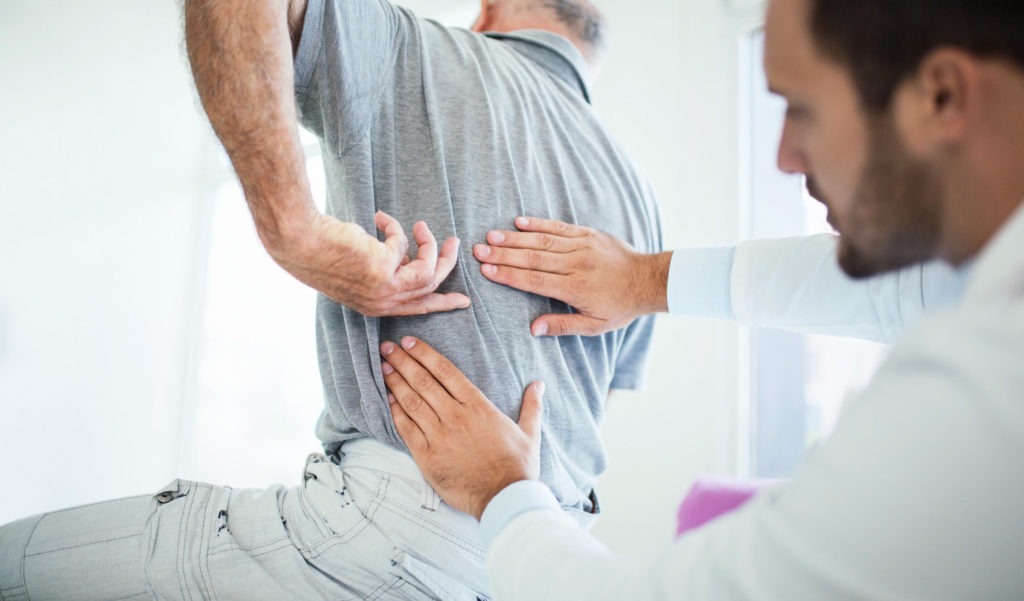
As stated earlier, back pain is a pervasive condition that isn’t relieved by an all-inclusive treatment process. Below are some of the treatment measures that can alleviate back pain.
Medication
Medication proves to be one of the easiest ways to manage back pain. Prescription and over-the-counter drugs are quite effective in relieving pain.
1. 1. Painkillers Are the Primary Treatment Measure Adopted in Managing Back Pain.
Based on a 2017 study by Statistica, respondents stated their treatment regimen. 49% used painkillers, 32% rested regularly, and 30% engaged in specific back exercises.
Other percentages were recorded: Moving a bit everyday (28%) and analgesic ointment and patches (25%).
According to Harvard Medical School, you should know that pain relievers work as short-term relief and manage the symptoms.
Chiropractic Treatment
Chiropractic is an alternative and conventional treatment for back pain. This procedure is conducted by trained and licensed professionals called chiropractors. It’s gradually becoming a popular management process for back pains.
2. The US Boasts Over 70,000 Licensed Chiropractors in The Chiropractic Industry.
According to a 2017 clinical practice guideline, The American College of Physicians recommends spinal manipulation as a treatment plan for chronic back pain since it effectively manages the condition.
3. The University of Michigan Reports that 4 out Of Every 10 Americans Visit Chiropractors at A Point in Time.
Primary care physicians state that 40% of people consult them for treatment while 20% turn to a subspecialist. The military also adopted chiropractic treatment in treating back pain.
Based on results from a 2018 assessment involving 750 active duty US military personnel with LBP, it’s discovered that those who had chiropractic sessions and formal care showed recovery from low back pain within a short time compared to those who undergo formal treatment.
Physical Therapy
4. Clinical guidelines often suggest physical therapy approaches such as exercises, manual therapy, and superficial heat.
Spine pain ranks among the major reasons people resort to physical therapy. This treatment process has received many reviews, both positive and negative.
Surgery
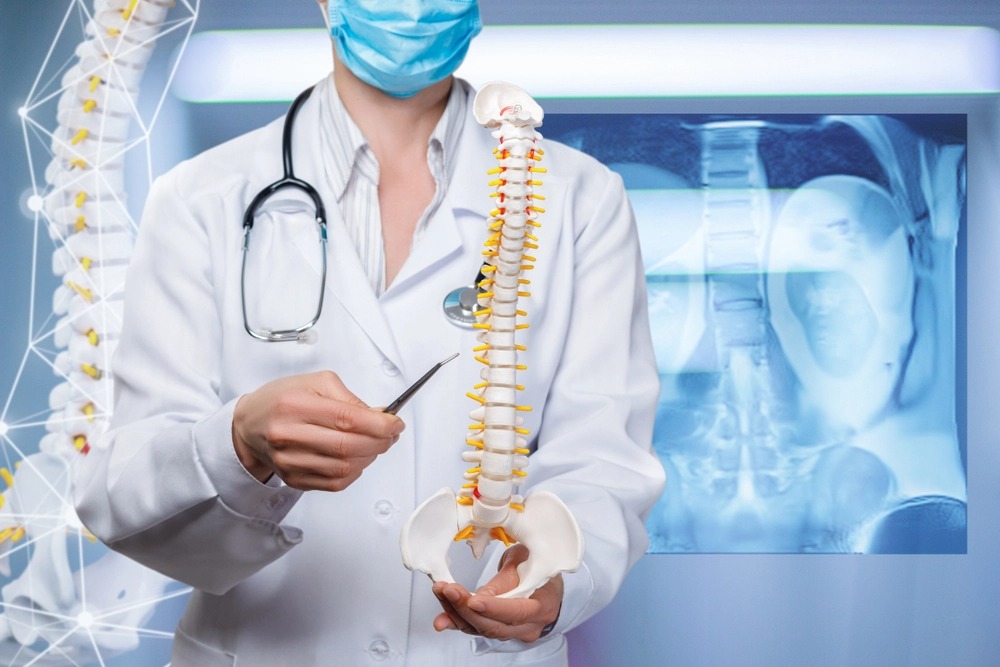
Surgery is another medical procedure that may be recommended in case of chronic back pain. The purpose of surgery is to reduce pain while restoring lumbar spine stability.
5. Only About 5% of Americans with LBP Need Surgery.
Irrespective of the percentage of LBP patients requiring surgical procedures, many people with LBP are still considering surgery.
According to a report by The Asian Spine Journal, it’s recorded that the annual number of lumbar fusion surgeries done between 1998 and 2008 increased from 77,682 to 210,407.
About 14 billion dollars were spent on spinal surgery in 2004.
TENS
Also known as Transcutaneous Electrical Nerve Stimulation, TENS is a therapy involving the use of electric current to stimulate sensory nerves and provide pain relief.
Today, this medical procedure is carried out at home under the supervision of a trained professional.
6. Between 2006 and 2010, the Number of Medicare Beneficiaries Purchasing Tens Unit Increased from 40,579 to 84,705.
Medicare stopped paying for transcutaneous electrical nerve stimulation (TENS) for their beneficiaries in 2012. Only patients who were recommended for TENs were reimbursed.
Nevertheless, TENS can be purchased online for home treatment.
Injections
People with back pain can opt for steroid injections as a relief mechanism.
7. Injection Fees Increased Greatly by Over 100% Between 2009 and 2019.
According to Sciatica, while steroid injections aren’t as potent as other treatment types, they can provide short-term relief. The American guidelines document that people who’ve been injected with steroids may still choose surgical procedures.
Medicare reported a six-time increase in spinal injection charges, resulting in a small rise in the population using the treatment process.
Acupuncture

8. US Medical Guidelines Approve Acupuncture as A Treatment Measure for Acute LBP.
A study on lower back pain reveals that acupuncture may be a better option for managing symptoms than nonsteroidal anti-inflammatory drugs. There are claims that acupuncture has fewer side effects, but this is inconclusive.
Exercise
Exercise proves to be effective in people living with chronic LBP while building up the lumbar region.
9. Health Guidelines Prescribe Exercise for People with Chronic LBP.
The Lancet found that 60% of people who complained of LBP were administered with prescription drugs. Exercise was recommended for some people with chronic back pain.
No form of exercise is more effective than the other. Consider your preferences and needs when choosing a type of exercise.
Aerobic and muscular strength exercises are recommended for patients since they help to strengthen lumbar muscles.
The top exercises for LBP as listed by Medical News Today include the following:
1. Bridges
2. Lumbar rotational stretches
3. Pelvic tilts
4. Knee-to-chest stretches
5. Draw in maneuvers
6. Superman
7. Side leg raises
8. Partial curls
9. Flexion rotation stretch
10. Cat stretches
Conclusion
We hope these back pain statistics will encourage you to take better care of your spine and consider what the ramifications are for not doing so.
It’s important that we do everything in our power to avoid becoming a statistic, but it doesn’t have to be difficult. It’s best to seek medical advice before exercising to reduce risk and ensure you’re working out in the right way.
The aim of the exercise is to strengthen your muscles without harming yourself. Talk to a physician today!
Sources
| UMICH | BMJ | American Academy of Family Physicians |
| American Chiropractic Association | Bureau of Labor Statistics | CMS |
| JABFM | MedRisk | National Institutes of Health |
| National Institutes of Health | National Institutes of Health | National Institutes of Health |
| National Institutes of Health | Occupational Safety and Health Administration | Oulu |
| PRWeb | St. Moritz Security Services, Inc. | Statista |
| Statista | The Lancet | Who |







